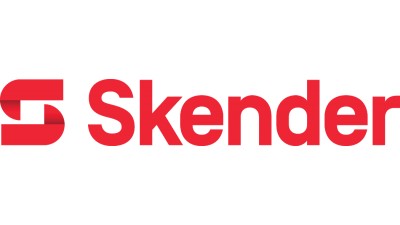6 Ways Developers Can Build Smarter During Design And Construction

The cost of construction in the U.S. continues to rise. In May, the government implemented tariffs on steel and aluminum imports from Canada, Mexico and the European Union. Already burdened by the growing cost of skilled labor, levies on 25% of steel imports and 10% of aluminum could cause the construction cost of office and industrial high-rise projects to rise significantly. Several steel suppliers have already boosted prices from $300/ton to $400/ton.
Developers are looking for new ways to cut costs and meet construction timelines. Skender, a Chicago-based design-manufacture-build firm that has pioneered Lean construction methodologies, recently published an e-book white paper highlighting over 100 tips to help developers keep costs low, meet their budgets and build long-lasting properties.
“We recognize how essential it is that everyone involved in a new building look for innovative ways to deliver high-quality projects while stemming the tide of rising construction costs affecting projects across the country,” Skender CEO Mark Skender said. “In this e-book, we are sharing some of the best practices we’ve learned with our clients and project partners over the past six decades.”
From sustainable construction to improved client-contractor communication, Bisnow highlighted six steps from the e-book that developers and contractors alike can take to stay under budget and on time.
1. Go Green On A Budget With Incentives
While LEED certification for sustainable building projects can appeal to potential tenants, certification fees can range from $2,250 to over $22K, depending on the size of the project. Rather than pursue LEED certification without a plan, developers can instead focus on specific goals like installing energy-efficient lighting and low-flush plumbing to curb wasted resources. Making sustainable construction choices will also help lower a building’s operating costs throughout its life cycle.
Developers can also turn to city and statewide incentives to cut costs during construction, and several municipalities will fast-track permitting for green buildings. Fannie Mae’s Green Rewards program, for example, provides lower loan pricing and increased proceeds to multifamily property owners looking to make sustainable upgrades to their buildings.
2. Communicate With End Users During Construction
As the occupants of the final space, end users understand how it will be used and the specific features they require. Should those needs change during construction, communication allows the various teams involved in building the property to adjust their plans. Failure to communicate regularly could lead to redesigns and rebuilds down the line, adding to the project’s total cost.
3. Experiment With VR And Invest In A BIM
Virtual reality is not just for gamers anymore. As headsets like Oculus Go and Google Cardboard become more portable and accessible, construction professionals have adopted the technology as a means to view and walk through designs and building schematics. More than a showy tool, VR enables end users unaccustomed to visualizing flat blueprints to experience the space and make decisions while there is still time to cost-effectively evaluate options.
VR mock-ups allow all parties involved to visualize the project long before construction and are cheaper than traditional, physical mock-ups.
Virtual reality is the latest addition to the growing practice of building information modeling. Combining 3D visualization with scheduling and budgeting, BIM improves communication across the team, from designers and contractors to trade partners. Shared platforms can also reduce requests for information during construction and minimize the number of change orders.
4. Look Toward Future Use
More buildings are being constructed with multiple purposes in mind. Rather than design a property with one use, end users and design teams can examine how the building might be used in the future. Through analyzing the future use of a given project, a development team can make cost-effective changes to accommodate the future use, like expanded electrical needs or plumbing rough-ins for additional kitchens or bathrooms.
5. Go Lean
Modeled after Toyota’s manufacturing principles, Lean construction relies on optimizing cross-team communication and schedules to keep projects on budget. Lean construction projects are three times more likely to be completed ahead of schedule than projects implementing traditional strategies, and twice as likely to be completed under budget.
By working with an integrated design and construction team experienced in Lean construction, developers can reduce wasted materials, cut down on construction time and slash labor costs.
6. Embrace Prefab Construction
Already popular among residential builders, prefabricated or modular construction has been embraced by commercial real estate for its cost-cutting capabilities and more efficient production timeline.
Modular construction is a method by which a building is constructed off-site under factory conditions and then shipped to the construction site, where it is assembled. Projects are completed with less risk and at higher levels of quality than traditional projects. Because the majority of modular construction occurs in a controlled environment immune to weather delays, the work is completed faster, which improves cash flow and revenue, which includes allowing developers to lease assets sooner.
With the structural construction of the building standardized and more cost-effective, developers can spend more time customizing the property with high-end finishes and facades.
Download Skender’s full e-book white paper to access all 101 strategies for optimizing construction efficiency.
This feature was produced in collaboration between Bisnow Branded Content and Skender. Bisnow news staff was not involved in the production of this content.

